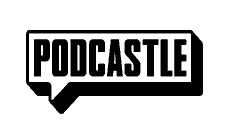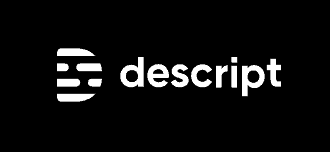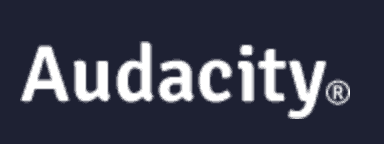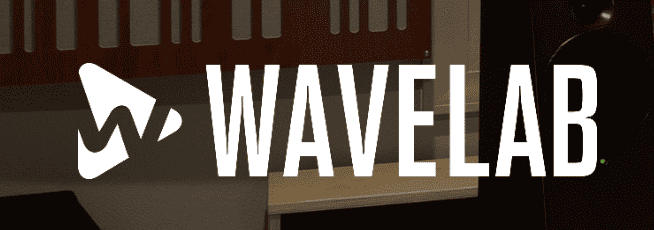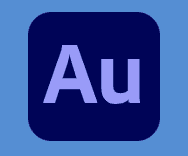
Podcasting has taken the digital world by storm, allowing individuals to express, share, and communicate their stories, insights, and expertise.
As the podcasting realm continues to grow, producing high-quality audio becomes paramount.
This is where audio editing software ensures that your podcast stands out clearly and professionally.
Editor’s Choice:
What Are Audio Editing Tools?
Audio editing tools are specialized software applications that manipulate, enhance, and refine sound recordings.
They offer a range of features, from simple tasks like cutting and trimming to complex functions like noise reduction, equalization, and multitrack mixing.
These tools are crucial in producing explicit and polished audio content for music, podcasts, film, or other media.
Factors to Consider for Choosing Audio Editing Software for Podcasts?
When seeking the ideal audio editing software for podcasts, prioritizing user-friendliness is essential, especially if you’re a beginner.
Consider the software’s features, ensuring it caters to tasks like noise removal, equalization, and compression.
Compatibility with your operating system, the availability of tutorials or support, and your budget are crucial factors. It’s also wise to look for software that supports various file formats and offers efficient exporting options.
How Do We Rank the Audio Editing Software?
Ranking audio editing software involves a comprehensive evaluation based on several criteria.
We consider the software’s overall functionality, ease of use, and the richness of features it offers. User reviews and industry reputation also play a significant role.
Additionally, we assess the software’s adaptability to various user needs, from novices to professionals.
Lastly, considering both freemium and premium versions, the value for money is weighed to provide a holistic ranking.
| Software Name | Best Suited For |
|---|---|
| Podcastle | Podcasters seeking a user-friendly platform with AI-driven features for recording, editing, and transcription. |
| Auphonic | Audio professionals and podcasters aiming for automated leveling, noise reduction, and high-quality sound. |
| Descript | Content creators focusing on seamless audio editing through transcription and collaboration features. |
11 Best Podcast Audio Editing Software
1. Podcastle
Podcastle is an innovative platform designed for podcast creation, editing, and transcription. Beyond the essential editing tools, Podcastle stands out with its AI-driven features, allowing for transcriptions, translations, and even converting blog posts into podcast episodes. It’s not just another tool; it’s an ecosystem for podcasters.
Who Is It For?
Beginners? Absolutely, with its user-friendly interface.
Bloggers? For sure, given its unique feature of turning blogs into podcasts.
Professionals? Yes, with its suite of advanced features and tools.
Whether you’re looking to kickstart your podcast journey, elevate your blogging game, or seek advanced tools for professional content, Podcastle seems to cater to all.
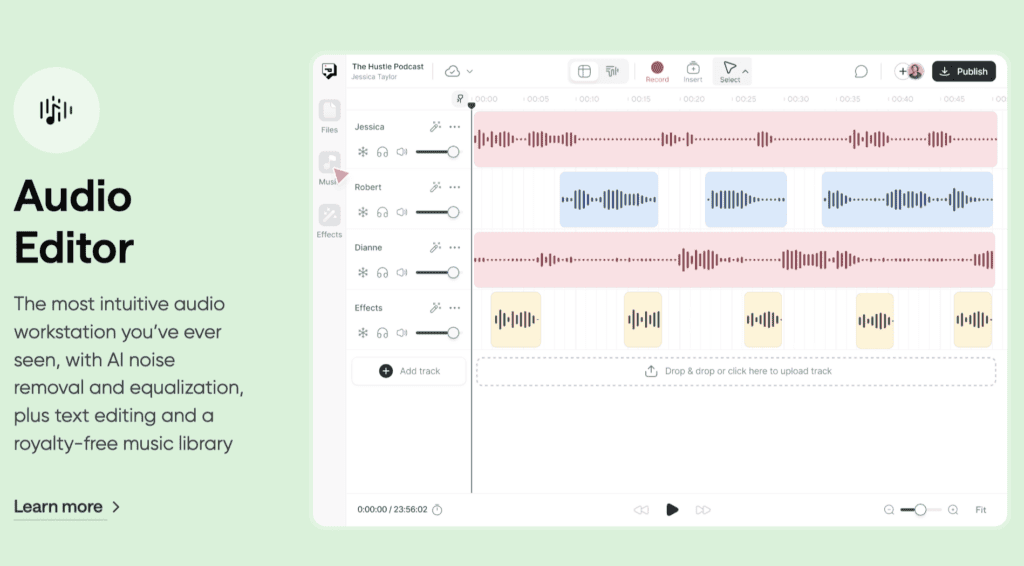
Why We Recommend
- AI-Driven Features: The AI integration is a game-changer from transcriptions to translations.
- Blog-to-Podcast: Unique in its offering, turning written content into audio has always been challenging.
- Cloud-Based: Edit on the go, anywhere, anytime.
- Collaboration Tools: Collaborate with your team in real-time, perfect for co-hosted podcasts or team projects.
- Diverse Export Options: Whether it’s MP3, WAV, or even a video format, Podcastle has you covered.
Pricing
Podcastle operates on a freemium model. While it offers a basic version for free, its premium features come with a subscription fee.
- Intuitive Interface: Simple enough for beginners yet detailed for professionals.
- AI Features: Transcription and translation services streamline the content creation process.
- Real-time Collaboration: A boon for teams and co-hosts.
- Multi-Platform Support: Use it on any device, thanks to its cloud-based architecture.
- Internet Dependency: Being cloud-based means you need a reliable internet connection.
- Premium Features Cost: While the basic version is free, to unlock its full potential, you’ll need to invest in a subscription.
2. Auphonic
Auphonic is an automatic audio post-production web-based platform aimed at podcasts, broadcasters, radio shows, and any content involving audio. It’s designed to optimize dialogue volumes, balance levels between tracks, remove noise, and more – all automatically.
Who Is It For?
Podcasters? Especially those who want quick audio fixes without delving deep into editing.
Radio Shows and Broadcasters? Yes, with its adaptive leveler, it balances various segments effectively.
Interviewers? Of course, Auphonic ensures all voices, regardless of their initial recording levels, are heard clearly and equally.

Why We Recommend
- Automatic Audio Post-Production: Less hands-on work for you.
- Adaptive Leveler: Balances levels between speakers, music, and other audio elements.
- Noise and Hum Reduction: Produces clear, top-quality audio.
- Web-based Platform: Accessible from anywhere without the need for software downloads.
- Integration: Easily integrates with other podcasting and broadcasting tools.
Pricing
Auphonic uses a unique pricing model. They offer a certain amount of audio processing minutes for free each month. Beyond that, users can purchase packages based on the number of processing minutes they need.
- Automatic Audio Enhancement: No need for manual tweaking.
- Web-Based: Accessible from any device with an internet connection.
- Generous Free Tier: Suitable for smaller projects or occasional users.
- Quality Output: Consistently good results even with challenging audio files.
- Limited Free Minutes: Bigger projects will require paid plans.
- Internet Dependency: Being a web-based tool, a solid internet connection is a must.
3. Descript
Descript is a revolutionary audio editing software that blurs the lines between text and audio. Instead of a waveform, you get a transcript. Edit the transcript and the audio changes accordingly. It’s a refreshing take on audio editing, especially beneficial for podcasters and content creators.
Who Is It For?
Podcasters? Especially for those who regularly transcribe their shows.
Video Content Creators? With its Overdub feature, video editors can now edit spoken word effortlessly.
Journalists and Interviewers? Transforming spoken word interviews into written content has always been more complex.

Why We Recommend
- Text-based Editing: No need to fiddle with complex waveforms. Just edit the text.
- AI-Driven Transcription: Get quick, accurate transcriptions of your audio.
- Overdub: Create a digital voice clone and generate new voice content seamlessly.
- Multi-track Editing: Handle complex sessions with ease.
- Integration with Third-party Tools: Easily compatible with tools like Adobe Premiere Pro.
Pricing
Descript offers a freemium pricing model. There’s a basic free version available with limited features. Various paid plans are available for access to the more advanced features.
- Text-based Editing: Changes the way you perceive audio editing.
- Highly Accurate AI Transcription: Speedy and precise.
- Overdub Feature: Perfect for creating AI-driven voiceovers.
- Collaborative Tools: Makes team-based projects a breeze.
- Learning Curve: Different from traditional audio editors.
- Dependent on Internet: Being largely cloud-based, requires consistent connectivity.
4. Hindenburg
Hindenburg Audio Editor, often termed Hindenburg Journalist, is a multi-track audio editing software explicitly designed with radio journalists, podcasters, and audiobook authors in mind. Its primary focus is on storytelling, making it a powerful tool for those who are into narrative audio pieces.
Who Is It For?
Radio Journalists? Without a doubt. Hindenburg was built with radio storytelling as its central premise.
Podcasters? Indeed, especially for those aiming for professional-quality production.
Audiobook Creators? With its focus on narrative, Hindenburg is a valuable asset.
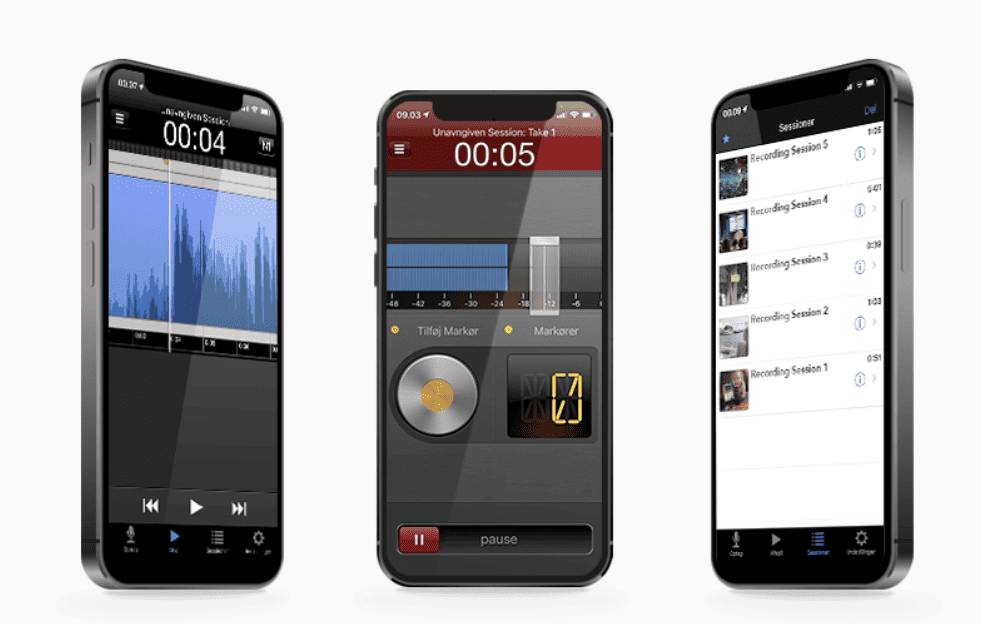
Why We Recommend
- Auto Levels: Automatically adjusts levels to broadcast standards.
- Voice Profiler: Once it knows your voice, it adjusts automatically in subsequent sessions.
- Simple User Interface: Stripped of the often unnecessary features found in other DAWs.
- Clip-based Editing: Allows for easy structuring of narratives.
- Integrated Publishing: Direct publishing to Libsyn, SoundCloud, and more platforms.
Pricing
Hindenburg offers different pricing tiers, from the basic Journalist version to the more advanced Journalist Pro and even an enterprise solution.
- Storytelling Focus: Designed for narrative audio projects.
- Auto-level Features: Streamlines the editing process.
- Voice Profiler: Tailors the settings to the user’s voice.
- Direct Publishing: Seamless integration with popular platforms.
- Price Point: Higher tiers can be on the pricier side for hobbyists.
- Learning Curve: Might be challenging for those used to other DAWs.
5. Audacity
Audacity is one of the most popular open-source audio editing software available today. Renowned for its powerful features and adaptability, it provides various tools for audio tasks, from simple recordings to intricate multi-track projects.
Who Is It For?
Beginners? Absolutely. Its user-friendly interface ensures newcomers can get started with ease.
Advanced Users? Yes, thanks to its range of robust features and customization options.
Podcasters? Indeed, given its capabilities for voice recording and editing.
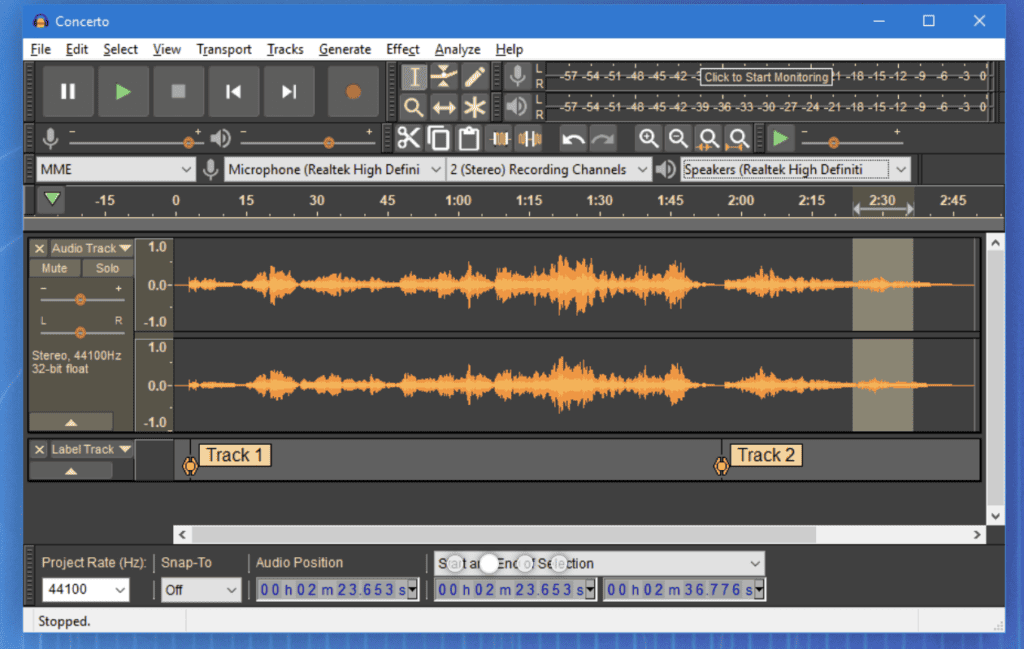
Why We Recommend
- Open Source: Being open-source means continual updates, improvements, and community-driven enhancements.
- Multi-Platform: Operates on Windows, macOS, and Linux, ensuring broad accessibility.
- Extensive Audio Processing Tools: It covers a broad spectrum of audio processing needs, from noise reduction to effects.
- Plugin Support: Allows users to expand its capabilities even further.
- File Format Versatility: Supports a vast array of audio file formats.
Pricing
Here’s the kicker: Audacity is FREE. One of its most compelling attributes is granting users access to a professional-grade audio editor without the price tag.
- Free to Use: Professional-level editing capabilities without the price tag.
- Open-Source: Benefits from a vast community, ensuring regular updates and enhancements.
- Multi-Platform: Works seamlessly on major operating systems like Windows, macOS, and Linux.
- Extensive Feature Set: From basic trimming to multi-track editing, it caters to a range of audio needs.
- Plugin Support: Can be further expanded with third-party plugins.
- File Format Support: Handles a wide variety of audio formats.
- User Interface: Some find its design dated compared to newer software.
- Learning Curve: While beginner-friendly, mastering it fully can take time.
6. Alitu
Alitu is an all-in-one podcast production platform designed to simplify the podcasting process for creators. From recording to publishing, Alitu offers a streamlined approach, automating several post-production tasks, making it a go-to for those who prefer a more hands-off approach to the technical side of podcasting.
Who Is It For?
Are you podcasting Newbies? Absolutely, given its user-centric design and automation.
Seasoned Podcasters? Yes, especially those who want to save time on post-production.
Businesses and Brands? Indeed, its simplicity aids in maintaining a consistent podcasting schedule.
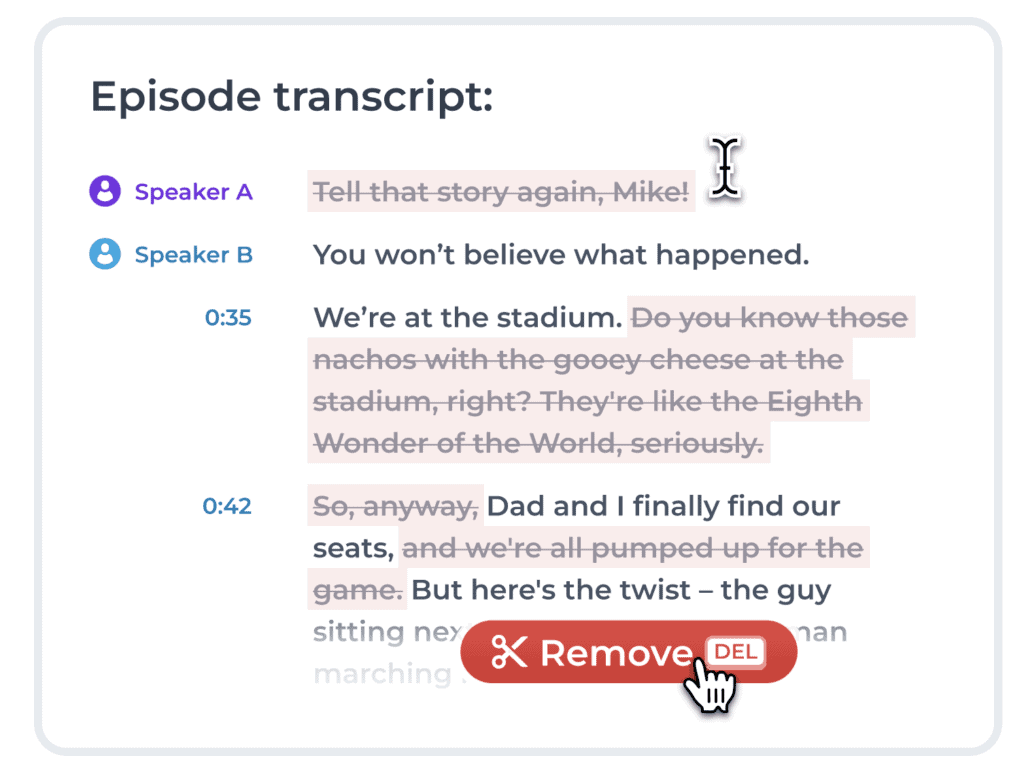
Why We Recommend
- Automated Audio Cleanup: Alitu automatically handles noise reduction, leveling, and more.
- Built-in Recording Tool: Allows direct recording into the platform.
- Intuitive Episode Builder: Easily combine multiple segments, ads, and interviews.
- Theme Music and Effects: Provides a library of royalty-free music and effects to enhance episodes.
- Direct Publishing: Integrated with popular podcast hosts for direct episode publishing.
Pricing
Alitu operates on a subscription-based model with monthly and annual payment options.
- All-in-One Solution: Covers everything from recording to publishing.
- Automated Post-Production: Saves significant editing time and effort.
- Intuitive Design: Tailored for both beginners and experienced podcasters.
- Audio Enhancement Tools: Built-in library for music and effects.
- Subscription-Based: While feature-rich, it’s not a free platform.
- Internet Dependency: Being cloud-based, it requires a stable internet connection.
7. REAPER
REAPER, an acronym for “Rapid Environment for Audio Production, Engineering, and Recording,” is a versatile digital audio workstation (DAW) recognized for its customization and powerful features.
With many functionalities, REAPER caters to audio and MIDI recording, editing, processing, mixing, and mastering.
Who Is It For?
Music Producers? Undoubtedly, given its rich set of features tailored for music creation.
Audio Engineers? Absolutely, due to its advanced audio processing capabilities.
Podcasters? Yes, with its efficient multi-track editing, it’s fit for podcast production.
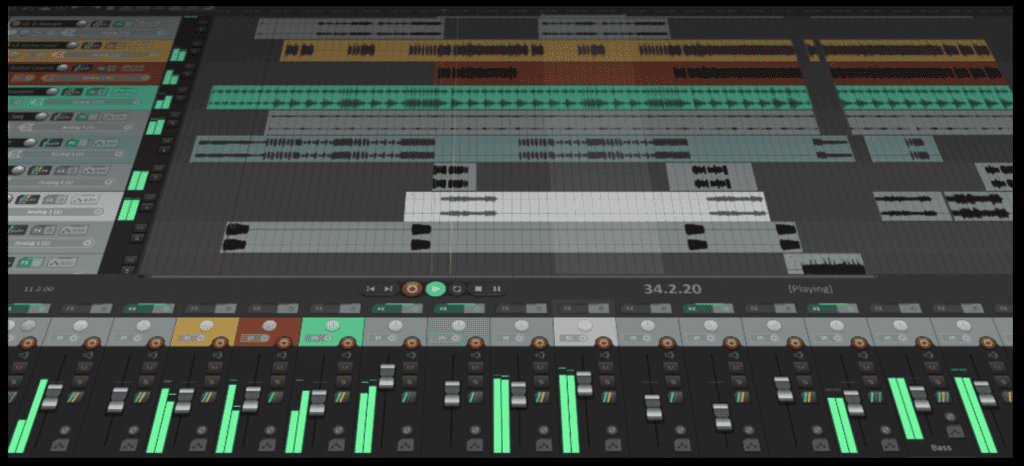
Why We Recommend
- Highly Customizable: REAPER offers a wide range of skins, layouts, and toolbars.
- Efficient Workflow: Its streamlined interface enhances productivity.
- Extensive Plugin Support: Works seamlessly with a vast number of third-party plugins.
- Multi-Platform: Available for Windows, macOS, and Linux.
- Flexible Routing: Superior to many pricier DAWs.
Pricing
REAPER offers a licensing system where users can evaluate the full version without limitations for 60 days. Post-evaluation, they provide two options: a discounted license (for personal use) and a commercial one.
- Cost-Effective: Offers professional capabilities at a reasonable price.
- Highly Customizable: From interface to functionality, tweak to your preference.
- Lightweight: Efficient and responsive even on older machines.
- Advanced Routing: Sophisticated routing capabilities for intricate audio setups.
- Active Community: Beneficial for support, extensions, and custom scripts.
- Learning Curve: May be steep for beginners unfamiliar with DAWs.
- Default Theme: Some users find the default interface a bit dated.
8. WaveLab
WaveLab, developed by Steinberg, is a top-tier audio editing, mastering, and audio processing software. Revered in the professional audio community, WaveLab provides tools suitable for everything from audio restoration to CD/DVD audio production.
Its advanced capabilities and precision make it a favorite among sound engineers and producers worldwide.
Who Is It For?
Sound Engineers? Definitely. Its advanced mastering tools cater to professional needs.
Music Producers? Yes, especially for those looking for refined audio processing.
Audio Restorers? With its restoration tools, it’s a go-to choice.
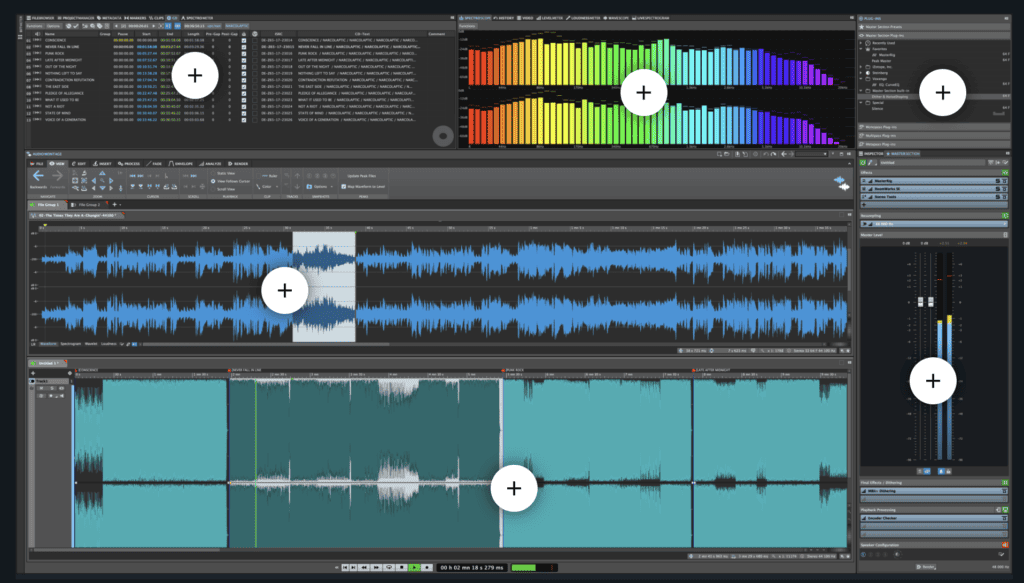
Why We Recommend
- Mastering Suite: WaveLab offers a range of tools for mastering, ensuring pristine sound quality.
- Audio Analysis: Users can delve deep into their audio with its detailed visualizations.
- Restoration Tools: WaveLab’s restoration capabilities are top-notch, making it great for cleaning up recordings.
- Batch Processing: Efficiently process multiple files with consistent settings.
- Plugin Support: WaveLab supports many third-party plugins, further enhancing its capabilities.
Pricing
WaveLab offers different versions tailored to various needs, including WaveLab Pro and WaveLab Elements, each with its pricing.
- Professional Grade: Designed for high-level audio work.
- Extensive Toolset: Covers everything from mastering to restoration.
- Customizable Interface: Allows users to tailor the workspace to their needs.
- High-Quality Plugins: Comes with a range of premium built-in plugins.
- Efficient Workflows: Designed to speed up the mastering and editing process.
- Price: Higher-end versions can be costly for hobbyists.
- Learning Curve: Due to its vast features, it might be overwhelming for beginners.
9. Pro Tools
Pro Tools, developed by Avid Technology, is arguably one of the industry’s most recognized digital audio workstations (DAWs).
Lauded for its advanced capabilities and precision, Pro Tools is a staple in many professional studios, catering to music production, film scoring, and post-production sound design.
Who Is It For?
Music Producers? Absolutely. It’s renowned for its music production capabilities.
Sound Engineers? A definitive yes, given its intricate audio editing and processing tools.
Film Composers? With its extensive MIDI functionalities, it’s a favorite choice.
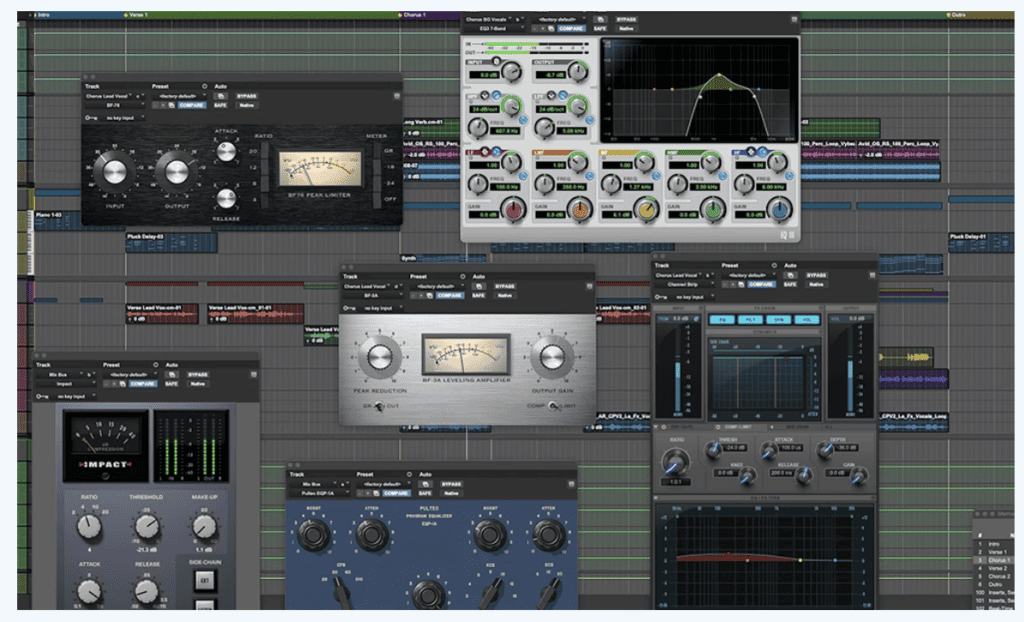
Why We Recommend
- Industry Standard: Pro Tools is often considered the gold standard in many professional studios.
- High-Quality Audio Engine: Offers pristine sound quality and processing capabilities.
- Advanced Editing Tools: Provides many tools for in-depth audio and MIDI editing.
- Collaborative Features: Allows multiple users to work on a project simultaneously.
- Elastic Audio: Enables easy time-stretching and pitch shifting without compromising quality.
Pricing
Pro Tools offers a tiered pricing model catering to both beginners and professionals.
This includes Pro Tools First (a free version), Pro Tools (standard), and Pro Tools Ultimate. The pricing varies, with subscription and perpetual license options.
- Industry-Leading Software: A benchmark for professional audio work.
- Precision Editing: Accurate and advanced tools for audio and MIDI.
- High-Quality Plugins: Bundled with an array of professional-grade effects and instruments.
- Scalability: Suitable for both small projects and large-scale productions.
- Integration: Smooth compatibility with other Avid products and third-party plugins.
- Cost: The premium versions can be pricey, especially for individual users.
- Hardware Restrictions: Some features and versions require specific Avid hardware.
- Learning Curve: Might be intimidating for those new to DAWs.
10. Fission
Fission, developed by Rogue Amoeba, is a streamlined audio editor designed with simplicity and efficiency. Unlike many traditional DAWs that cater to a vast array of audio production tasks, Fission focuses on essential editing functions, making it perfect for quick edits, cropping, and basic audio manipulations.
Who Is It For?
Podcasters? Especially those who require straightforward editing without the intricacies of a full-fledged DAW.
Music Lovers? Yes, for those who need to trim, split, or join their favorite tracks.
Content Creators? Ideal for quick edits before uploading or sharing audio content.
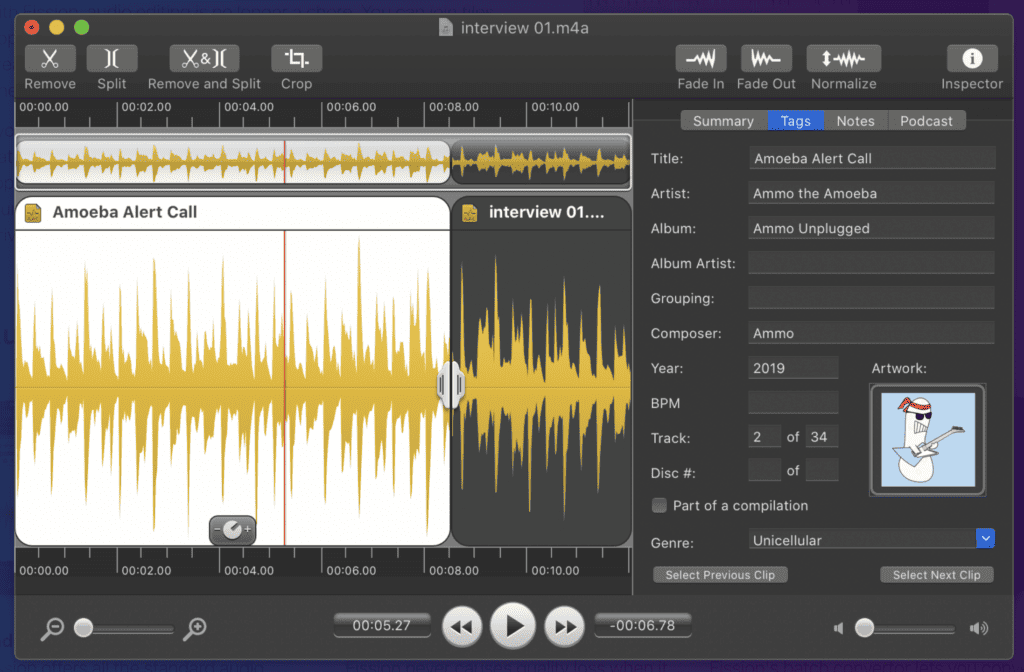
Why We Recommend
- Lossless Editing: Fission offers lossless audio editing, ensuring no degradation in quality.
- User-Friendly Interface: Its intuitive design makes it accessible even to complete beginners.
- Quick Processing: Given its streamlined nature, tasks like trimming or exporting are swift.
- Batch Conversion: Easily convert multiple audio files to different formats simultaneously.
- Support for Various Formats: It supports various audio formats from MP3 AAC to FLAC.
Pricing
Fission offers a free trial for users to get acquainted with its features. A one-time purchase is required for continued usage and access to all its features.
- Intuitive Design: Tailored for users of all skill levels.
- Fast Operations: Quickly complete basic audio tasks.
- Lossless Editing: Maintain the original audio quality.
- Batch Functions: Efficient for handling multiple files.
- Format Versatility: Supports a broad range of audio formats.
- Limited Advanced Features: Not suitable for complex audio production tasks.
- Platform Restriction: Primarily designed for macOS users.
11. Adobe Audition
Overview
Adobe Audition, a product of the renowned Adobe suite, is a professional digital audio workstation (DAW) widely used for audio recording, mixing, post-production, and more. With its robust set of tools, seamless integration with other Adobe products, and a reputation for producing high-quality audio, Audition stands out as a leading choice for audio professionals.
Who Is It For?
Sound Engineers? Undoubtedly, given its advanced audio processing capabilities.
Podcasters? Yes, it provides a comprehensive toolkit for podcast recording and editing.
Film Producers? Ideal for post-production sound design and audio enhancements.
Music Producers? Suitable for detailed audio editing and music production.

Why We Recommend
- Multitrack Editing: Enables complex audio projects with multiple layers and sources.
- Integrated Noise Reduction Tools: Essential for cleaning up recordings and improving clarity.
- Waveform View: For precision edits and in-depth audio adjustments.
- Seamless Integration: Works effortlessly with other Adobe software, such as Premiere Pro.
- Extensive Plugin Support: Compatible with a vast range of third-party plugins to expand its capabilities.
Pricing
Adobe Audition is available through Adobe’s subscription model as a standalone product or as part of the Adobe Creative Cloud suite.
- Comprehensive Toolkit: Packed with tools for various audio tasks.
- Advanced Restoration: State-of-the-art features for cleaning and restoring audio.
- Adobe Ecosystem: Integrates effortlessly with other Adobe applications.
- Flexible Workspace: Customize the interface to suit individual workflows.
- Support & Community: Backed by Adobe’s support and an active user community.
- Subscription Model: Some users prefer a one-time purchase option.
- Learning Curve: Might be overwhelming for beginners.
- System Demands: Requires a relatively powerful machine for smooth operation.
Conclusion
Selecting the right audio editing software can make a marked difference in your podcast’s quality and professionalism. For those looking for a user-friendly interface with AI-driven features, consider trying Podcastle.
If you have any questions, write to us in the comment section below. You can also send us your feedback if we want to include other helpful software on our list.
To stay updated on our recent posts and informative articles, subscribe to our newspaper so you don’t miss any updates.
FAQs
⭐️ Why do I need specialized audio editing software for my podcast?
Specialized audio editing software ensures your podcast audio is clear, free of unnecessary noise, and professional-sounding. Good software can enhance the listener’s experience by seamlessly improving audio quality, balancing levels, and seamlessly adding effects or music.
⭐️ Are there free audio editing options available?
Yes, several free audio editing options are available, with Audacity being one of the most popular and comprehensive. It offers a wide range of features suitable for beginners and intermediate users.
⭐️ How important is it to invest in premium audio editing software?
Investing in premium software often brings advanced features, better user support, and seamless integration with other tools. While not always necessary, investing in premium software can be beneficial if podcasting is a significant venture for you.
⭐️ Can I edit a podcast on my mobile device?
Yes, there are several mobile applications available for podcast editing. However, desktop software typically offers more features and precision for intricate editing and detailed work.
⭐️ Do these software tools offer noise reduction features?
Most professional-grade audio editing software provides noise-reduction tools. These are crucial for podcasters as they help eliminate background noises, hums, or hisses, ensuring clear audio.
Related Articles
